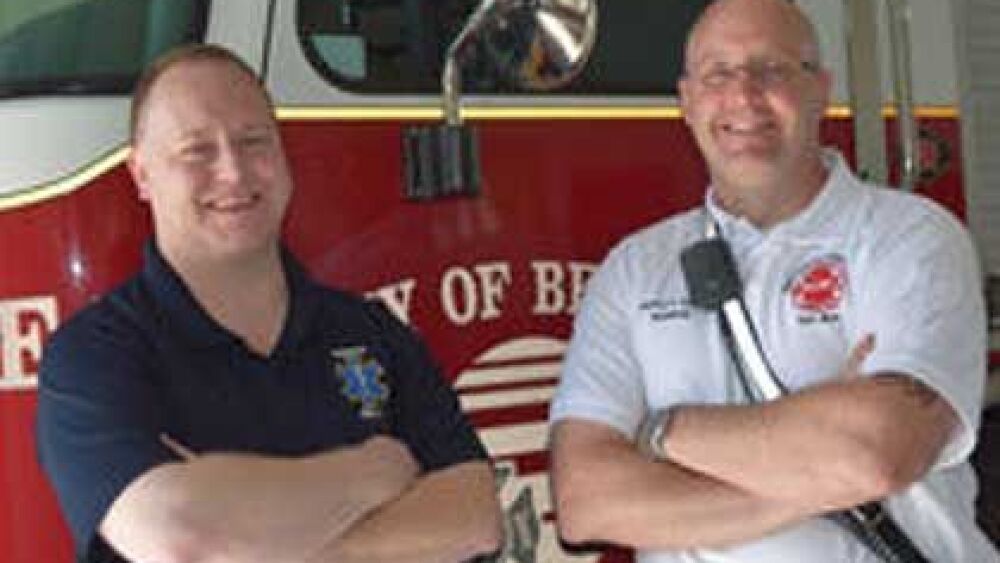By Jay MacNeal, David Cone, Chris Wistrom and Joe Murray
Fire and EMS crews are inundated with stressors to their bodies, many of which are unpreventable. In our study, Report: Incremental alarms better for firefighter heart health, we looked at a preventable cause of stress on the body.
In the current economic climate, many departments are forced to cross-staff or cross-cover stations. Moving apparatus around in the middle of the night, high-run volume and a very loud alerting system takes its toll on our firefighters who are dual trained as paramedics or EMTs.
Coupling this lack of adequate rest with loud adrenaline-dumping alerting systems caught our attention when we saw several of our firefighters after a shift. They appeared physically and mentally depleted.
This was very concerning, and the fire department leadership and medical directors wanted to see if there was anything that could be done to improve the situation. Unfortunately, reducing cross-coverage was not an option. So, we looked at other ways to improve the system.
In our research study, “” we specifically looked at ways to reduce the amount of unnecessary tachycardic responses of our firefighters.
We obtained institutional review board approval since this study required the use of human subjects. Those not interested in participating opted out of wearing the pulse-tracking watches.
Phase one: Startling baseline
In phase one of the study, we monitored heart rates at rest, at alarm time and during response. What we found was not surprising, but nonetheless startling.
At times, we had firefighters with resting heart rate of 40 instantly shoot up to 160. These heart rates oftentimes remained high throughout the time of the response, call and return to service.
Phase two: Modify alerting procedures
In phase two of the study, we monitored heart rates in a similar manner. The alert tones were the same volume as in phase one.
What was changed was the implementation of station-specific alerting. This reduced the overall number of firefighters with the tachycardic response, but it did not change the physiologic response to the sudden and startling tone sequence.
Phase three: Ramp-up alert tone volume
In phase three of the study, we continued with the heart-rate monitoring and station-specific alerting. However, in phase three we implemented about 4 seconds of ramp-up time on the tone.
Gradually escalating the tone from lower to full volume was met with a very happy response from the firefighters. The data obtained from the pulse-tracking watches also showed significant reduction in the amount of tachycardic responses in all firefighters wearing them.
This study is an important validation of what we in the emergency services have known for years ― that we don’t like to be suddenly jolted by an unnecessarily loud Klaxon horn or cranked up Plectron. We have shown with pretty good scientific evidence that ramp-up tones work.
Whether or not this will prevent any heart attacks, strokes or overexertion injuries may never be determined. But we have an obligation to reduce the risks to our personnel when we can. The ramp-up station alerting is a simple and effective way to deal with fatigue, tachycardia and potentially long-term physical and psychological disorders.
Beloit (Wis.) Firefighters and leadership were paramount to the success of this study. They continue to use the ramp-up tone system, and are happy to discuss with anyone else looking to implement a ramp-up system.
About the authors:
James MacNeal, MPH, DO, NRP began his career in emergency medicine as a paramedic. He holds American Board of Emergency Medicine/Emergency Medical Services certification and completed an EMS fellowship at Yale University. He is the MercyRockford Health System’s EMS medical director.
David Cone, MD is the dispatch medical director for the New Haven Sponsor Hospital Program, which provides medical oversight for 225 paramedics and 700 EMTs working for 23 EMS agencies in the 12-town greater New Haven, Conn. area. Cone is a past president of the NAEMSP and editor-in-chief of NAEMSP’s textbook “Emergency Medical Services: Clinical Practice and Systems Oversight.” Cone is an active researcher, focusing on EMS systems.
Christopher Wistrom, DO serves as an emergency medicine physician as well as the EMS medical co-director at the Mercy Regional Emergency Medical Services Training Center-Janesville, Wis., and at the Mercy Walworth Emergency Medical Services Training Center, Lake Geneva, Wis.
Listen to the .












